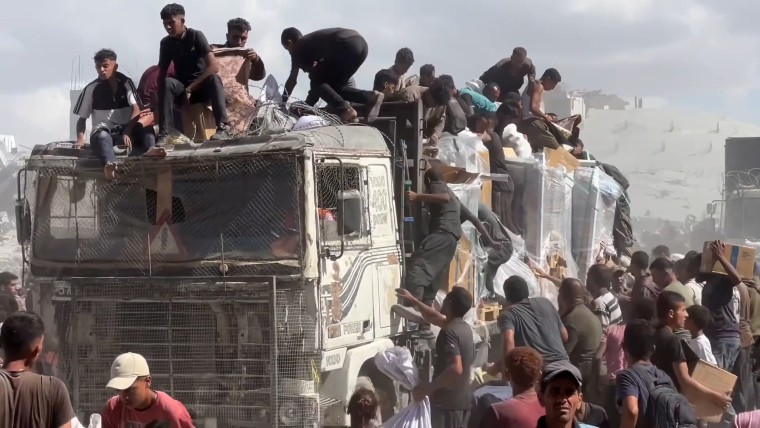
For the first time in months, humanitarian aid convoys have crossed into Gaza, bringing much-needed relief to millions of residents after weeks of devastating conflict. The deliveries come as a fragile ceasefire between Israel and Hamas holds for a fourth consecutive day, raising cautious optimism that a deeper calm might finally take root.
Lifeline for a Starving Population
Dozens of trucks carrying food, clean water, fuel, and medical supplies entered Gaza through the Rafah border crossing with Egypt on Sunday. According to the United Nations Office for the Coordination of Humanitarian Affairs (OCHA), these convoys represent the first large-scale aid deliveries since hostilities began earlier this year.
“Every minute counts,” said Martin Griffiths, UN Under-Secretary-General for Humanitarian Affairs. “Families in Gaza are starving, hospitals are running out of supplies, and people desperately need clean water. These deliveries are a lifeline — but they must continue.”
Before the ceasefire, Gaza faced what aid agencies described as a humanitarian catastrophe. Constant airstrikes, blockades, and power shortages left over 2 million residents without reliable access to food or medical care. Hospitals were on the brink of collapse, and fuel shortages crippled water and sanitation systems.
Ceasefire Enables Relief — But Fragility Remains
The temporary truce, brokered by Qatar, Egypt, and the United States, has provided a rare window for humanitarian operations to resume. Both sides have largely adhered to the ceasefire terms, which include the exchange of hostages and prisoners and the safe entry of humanitarian aid into Gaza.
Despite the cautious calm, aid organizations warn that the situation remains highly volatile. Security guarantees for aid workers are limited, and damaged infrastructure is slowing the movement of supplies inside the enclave. The World Health Organization (WHO) reports that dozens of hospitals remain non-functional due to bomb damage or lack of fuel.
Civilians Return to Devastation
As the guns fall silent, thousands of displaced Palestinians have begun returning to their neighborhoods in northern Gaza — only to find entire blocks reduced to rubble. Streets are littered with debris, power lines hang dangerously low, and basic utilities remain offline.
“I came back home, but there is no home,” said one resident from Gaza City. “Only ruins.”
Despite the destruction, local volunteers have joined international teams in distributing aid and clearing roads to reopen access routes for future convoys.
Calls for Sustained Humanitarian Access
Aid agencies stress that a few days of deliveries will not be enough to meet Gaza’s enormous needs. The UN World Food Programme (WFP) estimates that at least 600 trucks of supplies per day are required to stabilize food and medical access in the territory.
World leaders are urging both Israel and Hamas to maintain the ceasefire and open additional crossings for relief convoys. “This truce must be more than a pause in fighting — it must be the start of real recovery,” said Griffiths.
For now, as trucks roll through the Rafah gate and families receive their first warm meals in weeks, a glimmer of hope has returned to Gaza — a fragile reminder of what peace could look like if it’s given the chance to endure.
Watch video below :











